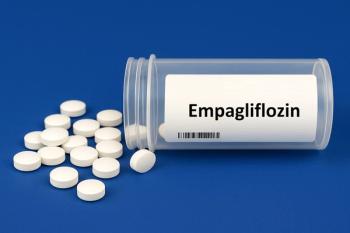
Treating Gut Disorders With Open-Label Placebo
A clinical trial looks into whether the use of open-label placebos can lead to better outcomes for children and teenagers with functional abdominal pain or irritable bowel syndrome.
In order to see a response to a placebo, the conventional wisdom has been that the person receiving the placebo can’t be aware of what she or he is being given. Research has shown that adults who receive open-label placebos can still see benefits, but none has been done in the pediatric population to see if this holds true in this population. A
Investigators ran a multicenter crossover randomized clinical trial at 3 centers in the United States from July 2015 to June 2018. Participants were children and teenagers aged 8 to 18 years with either functional abdominal pain or irritable bowel syndrome, which had been defined by Rome III criteria. Before randomization, that patients underwent 1 week of observation. During randomization, they were put into 1 of 2 groups: open-label placebo for 3 weeks followed by a 3-week control period or control period for 3 weeks followed by open-label placebo for 3 weeks. In the open-label placebo period, the participants were given 1.5 ml of a liquid placebo twice a day. The explanation of the open-label placebo was standardized and the time with clinicians was for the same duration and style during both time period. Hyoscyamine was permitted when rescue medication was required. Primary outcome was an average daily pain score on a 0- to 100-mm visual analog scale, with a higher score indicating more pain.
A total of 30 patients with an average age of 14.1 years finished the study. The average pain scores were found to be significantly lower during the period with open-label placebo treatment when compared to the control period (39.9 [18.9] vs 45.0 [14.7]; difference, 5.2; 95% CI, 0.2-10.1; P = .03). During the control period, the participants took roughly twice as many hyoscyamine pills than during the open-label placebo period (mean number, 3.8 [5.1] pills vs 2.0 [3.0] pills; difference, 1.8 pills; 95% CI, 0.5-3.1 pills).
The investigators concluded during the period when open-label was administered, the patients stated that they had much less pain and did not need as much pain medications. They believe that this indicates that using open-label placebo could be an effective form of treatment for functional abdominal pain or irritable bowel syndrome in children and teenagers.
Reference
- Nurko S, Saps M, Kossovsky J, et al. Effect of open-label placebo on children and adolescents with functional abdominal pain or irritable bowel syndrome: a randomized clinical trial. JAMA Pediatr. January 31, 2022. Epub ahead of print. doi:10.1001/jamapediatrics.2021.5750
Newsletter
Pharmacy practice is always changing. Stay ahead of the curve with the Drug Topics newsletter and get the latest drug information, industry trends, and patient care tips.















































































































